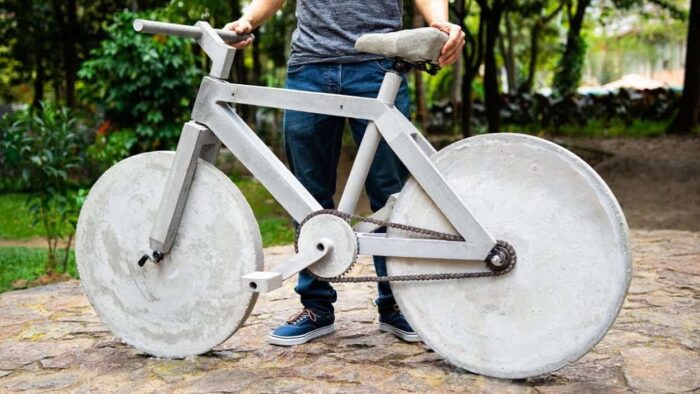Functional concrete bike: it exists and it's amazing
The concrete functional bike doesn't care about anything other than creativity. It's too heavy to roll on anything other than slow crawling, and despite its massive appearance, too flimsy to be really convenient or reliable.
It's a security risk and the least of the comfortable or easy modes of transport. But it's amazing, however, just to prove the above point: creativity is limitless. It's also amazing because it's a concrete bike and it exists.
This is the brainchild of the team behind Play to DIY, a YouTube channel that prides itself on making “all kinds of creative content” that involves “experiments, creativity, do-it-yourself”, be it concrete work or robotics, or even a mixture of the two.

It's dubbed "the world's first functional concrete bike", drawing inspiration from similar videos, now viral, that also set out to reinvent the bike. The description references the Icycle, the bicycle with circular saws for wheels, and the bicycle without hubs, both of which have been covered on previous occasions.
If you liked our content, follow our social networks on Facebook and Instagram.
The manufacturing process is presented in a 21-minute video, which, dare we say, is a must-see, even if you don't like cycling. This is the result of careful planning and a long period of testing, which is not included, and a lot of skill.
From day one to the first test, it was two months of hard work and it's condensed into a really fun video that also gives you a behind-the-scenes look.
The Concrete Bike is still an ordinary bike underneath the impressive facade. In order to be more precise, these are parts of regular old bicycles, which were cannibalized for the project – a kind of upcycling artistic, if you will.
For each part of the bike, the frame, the handlebars, the pedals or the saddle, plywood molds were made, which integrated the cannibalized part. For the structure, they used corrugated bars welded with epoxy glue for added strength.
The saddle is an old concrete-lined bicycle saddle, and the same method was used for the cranks and pedals.
See too: New Honda Hornet: More modern and powerful model
For assembly, the team still had to use screws and steel and metal parts, which were inserted into holes in the concrete, connecting to the internal parts.
Remember, this isn't a sculpture or whatever you want to call it: from the beginning, the goal was to create a functional bike.
Because you can't ride a concrete bike and not have the right accessories, the team also created a concrete helmet and a pair of concrete cycling goggles.
Unfortunately, the helmet lived a short, albeit eventful and historically important life, and was destroyed after the first round of test drives when the rider tried to put it on the handlebars and dropped it.




